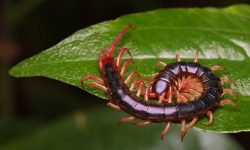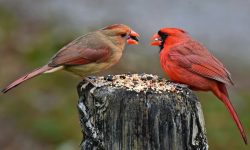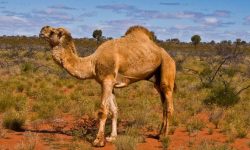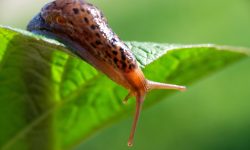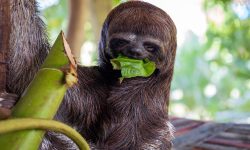Monkeys live in some of the most diverse habitats on Earth, from misty cloud forests to rugged mountains and sunlit savannas. Their diet reflects that diversity. Understanding what monkeys eat helps explain how they survive in such different environments and why they play such an important role in maintaining the balance of their ecosystems. Monkeys are adaptable creatures, and their food choices shift depending on season, habitat and availability.
Wild monkeys spend much of their day foraging: climbing trees, searching branches, peeling bark and digging through leaf litter to uncover nutritious foods. Their dexterity allows them to handle delicate fruits, crack nuts and collect insects with ease. Their sharp senses help them identify ripeness, avoid toxins and detect hidden prey. Because food availability changes constantly in the wild, monkeys’ flexible diets help them thrive even under challenging conditions.
This guide explores 20 foods monkeys forage for in the wild, offering a clear picture of the variety, nutrient sources and feeding strategies that shape their daily lives. Whether studying wildlife, writing about nature or simply curious about primate behavior, this breakdown offers meaningful insights into the natural diet of monkeys.
Understanding the Monkey Diet
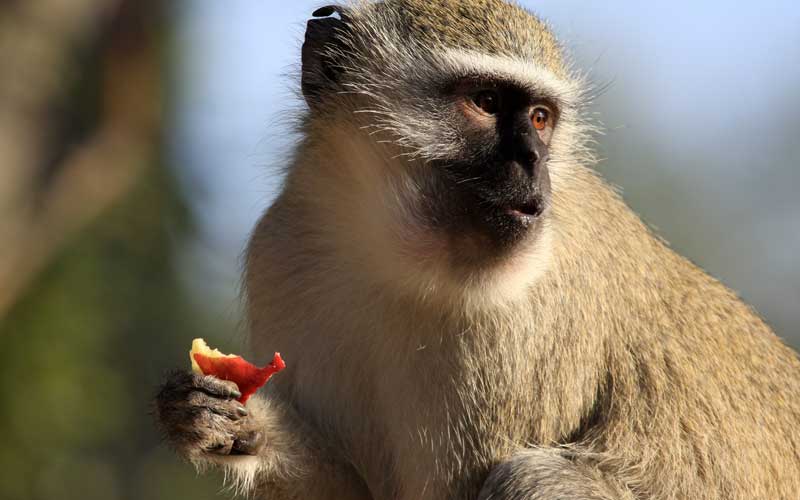
Monkeys are omnivores, meaning they eat plant-based foods as well as insects and occasionally small animals. Their diet varies dramatically depending on species. Fruit-loving monkeys like spider monkeys and macaques seek out ripe, sweet fruit. Leaf-eaters such as colobus monkeys depend on fibrous plant material and rely heavily on specialized stomachs to digest tough foliage. Some monkeys focus on insects or tree sap when fruit is scarce.
Seasonal change also plays a major role in what monkeys eat. During the dry season, fruit becomes limited, and monkeys switch to leaves, flowers, seeds or bark. During wetter months, forests burst with fruits, insects and tender new leaves. Because food conditions shift constantly, monkeys migrate across different parts of their home range to track seasonal abundance.
Social structure influences diet as well. Some monkeys forage in large troops, allowing them to cover more ground, while others feed quietly in small family groups. Their intelligence and problem-solving abilities help them access difficult foods, recognize poisonous plants and seek out nutrient-dense options. Understanding these patterns provides a window into the daily rhythms of wild monkey life.
20 Foods Monkeys Forage for in the Wild
1. Fruits
Fruit is one of the most important foods for many monkey species. Bright colors, rich scents and sweet flavors attract monkeys as they travel through the canopy. Fruits provide natural sugars that fuel energetic behaviors like climbing, leaping and social play.
Monkeys carefully select ripe fruit using sight and smell. They peel skins, break open husks and sometimes discard seeds. Their fruit-eating behavior also helps disperse seeds across forests, making monkeys key contributors to forest regeneration.
Fruit availability changes with the seasons, so monkeys often travel long distances to reach fruiting trees.
2. Leaves
Leaves make up a significant portion of the diet for leaf-eating monkeys such as colobus and langurs. These species have complex stomachs and specialized gut bacteria that help break down cellulose. Leaves provide fiber, minerals and hydration.
Monkeys often select young leaves because they are softer and easier to digest. They use their dexterous hands to pluck leaves from branches, sometimes eating dozens at a time.
Leaf-based diets are especially important during dry seasons when fruit is scarce.
3. Flowers
Flowers offer nectar, pollen and tender petals, providing a nutritious supplement to the diet. Monkeys often visit flowering trees at dawn when blossoms are fresh, fragrant and rich in natural sugars.
Flowers are seasonal, so monkeys take advantage of them whenever they bloom. Some species gently pull flowers apart to drink the nectar inside.
Flower consumption also helps pollinate forest plants, linking monkeys to important ecosystem cycles.
4. Seeds
Seeds offer concentrated nutrients, including fats and proteins, making them valuable to monkeys. They often extract seeds from pods, break open tough shells or collect fallen seeds from the forest floor.
Some monkeys store seeds in cheek pouches to eat later. Seeds provide long-lasting energy, particularly during food-scarce months.
Because seeds can be toxic in large quantities, monkeys rely on instinct and learning to choose safe varieties.
5. Nuts
Nuts are highly nutritious but require strength and skill to access. Monkeys crack nuts using their teeth, hands or even rocks. This resourcefulness highlights their intelligence.
Nuts provide essential fats that support brain function and energy needs. They are especially important for macaques and capuchins, who frequently forage for them.
Because nuts are seasonal, monkeys often return to specific trees year after year.
6. Bark
When food is scarce, monkeys strip bark from trees to access inner layers rich in water and nutrients. Bark is tough, but monkeys peel it with their sharp teeth and strong fingers.
This behavior is most common in dry seasons or in forests with limited fruit production. Some monkeys also chew bark for medicinal purposes.
Bark contributes to hydration and provides trace minerals otherwise hard to obtain.
7. Tree Sap
Tree sap is a sweet, sticky liquid that monkeys collect by licking or biting into bark. Tamarins and marmosets are known for their sap-feeding habits, often gnawing small holes to encourage sap flow.
Sap offers quick carbohydrates, helping monkeys maintain energy between larger meals. It also hydrates them during dry spells.
Because sap is available year-round in some trees, it acts as a reliable fallback food.
8. Insects
Insects are an essential protein source for many monkey species. They hunt beetles, crickets, termites and grasshoppers hidden in leaves and soil. Monkeys use sharp eyes and nimble fingers to catch insects quickly.
Insects provide amino acids, fats and minerals needed for growth and strength. Young monkeys especially benefit from insect protein.
During rainy seasons, insects become abundant, giving monkeys easy access to nutrition.
9. Caterpillars
Caterpillars are soft-bodied and protein-rich, making them a favorite among many monkeys. They are easy to catch and chew, and their high moisture content helps hydration.
Monkeys often pick caterpillars off leaves or branches. They typically avoid brightly colored species, which may be toxic.
Because caterpillars are seasonal, they act as a valuable supplement during certain months.
10. Ants
Monkeys commonly raid ant nests or pick ants off leaves. Ants are small but extremely abundant, providing manageable protein with minimal effort.
Some species crush ants to neutralize their bite before eating them. Young monkeys often practice catching ants as part of learning to forage.
Ants are a reliable year-round food, especially in tropical forests.
11. Termites
Termites are soft, protein-heavy insects that monkeys easily consume. They break open termite mounds or collect individuals crawling on fallen logs.
Termites are especially important in regions with dry seasons because they remain active underground. Their moisture-rich bodies help keep monkeys hydrated.
Monkeys often take advantage of termite swarming periods when insects become abundant.
12. Spiders
Spiders are quick prey that monkeys catch with careful movements. They provide protein, fats and essential micronutrients.
Monkeys typically target non-aggressive species and may flick webs aside before grabbing the spider. Their keen eyesight helps them track small motion.
Spider consumption supplements meals during periods when insects are less abundant.
13. Bird Eggs
Monkeys occasionally feed on bird eggs when they find unattended nests. Eggs provide dense protein, fats and nutrients.
They use their hands to gently remove eggs from nests or crack them open on branches. Species like capuchins are particularly known for this behavior.
Although not a primary food, eggs offer valuable nutrition during scarcity.
14. Small Lizards
Some species, especially capuchins and macaques, catch small lizards when available. Lizards provide substantial protein and are easy to digest.
Monkeys rely on stealth and quick reflexes to catch them. They typically consume lizards whole or in large pieces.
This behavior is more common in regions where insect prey is limited.
15. Snails
Snails are soft and slow-moving, making them easy for monkeys to gather. They offer moisture alongside protein.
Monkeys remove the soft body from the shell using their nails or teeth. Snails are especially important in damp forests after rainfall.
Their abundance makes them a convenient fallback food.
16. Fungi
Certain fungi and mushrooms are consumed by monkeys when found along fallen logs or shaded forest floors. They provide minerals and hydration.
Monkeys carefully choose safe varieties, often guided by instinct or observation of adults. Fungi are not eaten daily but add diversity to the diet.
Fungi consumption also introduces beneficial compounds that support digestive health.
17. Palm Shoots
Palm shoots and tender stems contain water and nutrients. Monkeys peel the outer layers to reach the soft interior.
These shoots are common in tropical forests and act as a refreshing food source during warm months. Their mild flavor appeals to many species.
Shoots offer fiber and hydration, aiding digestion and thermoregulation.
18. Bamboo Leaves and Shoots
In regions with bamboo forests, monkeys consume young bamboo shoots and tender leaves. These shoots are crisp, moist and full of fiber.
They chew the outer layers to reach softer inner tissues. Bamboo is most important for monkeys living in mountain regions.
Because shoots grow quickly, they provide a renewable food source throughout the year.
19. Roots and Tubers
Monkeys sometimes dig for roots and tubers during dry seasons. These underground foods contain starch, moisture and minerals.
Using strong fingers, monkeys pull soil away to reach edible portions. Tubers offer long-lasting energy and help bridge food gaps.
This foraging behavior is more common in savanna and woodland monkeys.
20. Nectar
Nectar provides quick energy and hydration. Some monkeys sip nectar directly from flowers, while others press blossoms to extract juices.
It is especially important during flowering seasons when monkeys follow nectar-rich trees. Nectar encourages pollination as monkeys move from flower to flower.
Although not a main food, nectar adds sweetness and moisture to their diet.
FAQs About What Do Monkeys Eat
What do monkeys eat most often?
Fruits, leaves and insects are
their most common foods.
Do all monkeys eat meat?
Only some species occasionally eat meat, such as lizards or eggs.
Do monkeys eat bananas in the wild?
Rarely. Wild monkeys prefer native fruits, not cultivated bananas.
How often do monkeys eat?
They forage throughout the day, consuming small quantities frequently.
Do monkeys eat roots?
Yes, some species dig for roots during dry seasons.
Are monkeys herbivores or omnivores?
Most are omnivores, though some species lean heavily toward plant-based diets.
Do monkeys drink water?
Yes, though they get much of their hydration from moist foods.
Do monkeys eat tree bark?
Yes, especially during food shortages.
What foods give monkeys energy?
Fruits, nuts and sap provide fast energy.
Do monkeys help forests?
Yes. They disperse seeds and support pollination.
Final Thoughts
Monkeys thrive because they can adapt to whatever their environment provides. By understanding what monkeys eat, we gain insight into their movements, survival strategies and ecological contributions. From ripe fruits and tender leaves to insects and occasional small animals, their diet reflects a balance shaped by evolution, habitat and opportunity. Watching how monkeys forage offers a deeper appreciation for their intelligence and the delicate ecosystems that sustain them.

